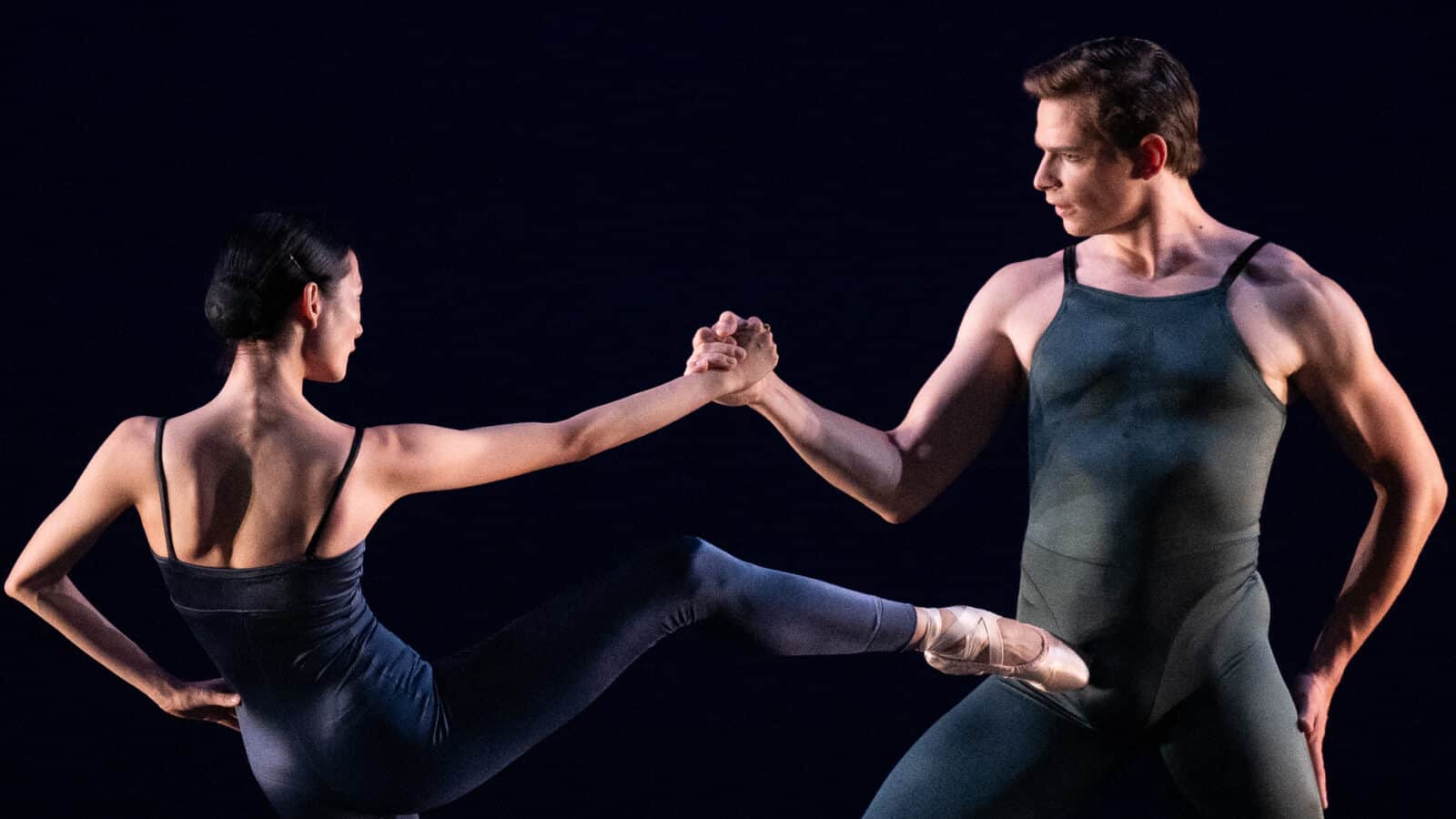One man steps up behind another and sets a hand on his chest, and then the other. And his partner moves with clear, deliberate sadness, flows out and away, and leaves that space empty.
Timothy van Poucke and James Stout propel each other, bare chested. They hold each other, and they turn away in solos as bright and raw as a night at a bar in Amsterdam. Michael Benjamin is singing country-inflected bass over solo guitar — and two men are dancing a pas de deux with the Dutch National Ballet.
The company has come to Jacob’s Pillow this week for the first time, though their resident choreographer, Hans van Manen, has known the Pillow since the 1960s. And this evening’s varied performances can give a deep sense of time — and potential energy.
They begin with contemporary choreography, opening us to experiences, expression and forces as varied and human as Wubkje Kuindersma’s Two and Only (2018), two men exploring intimacy, relationship with nuance and sheer athletic power.
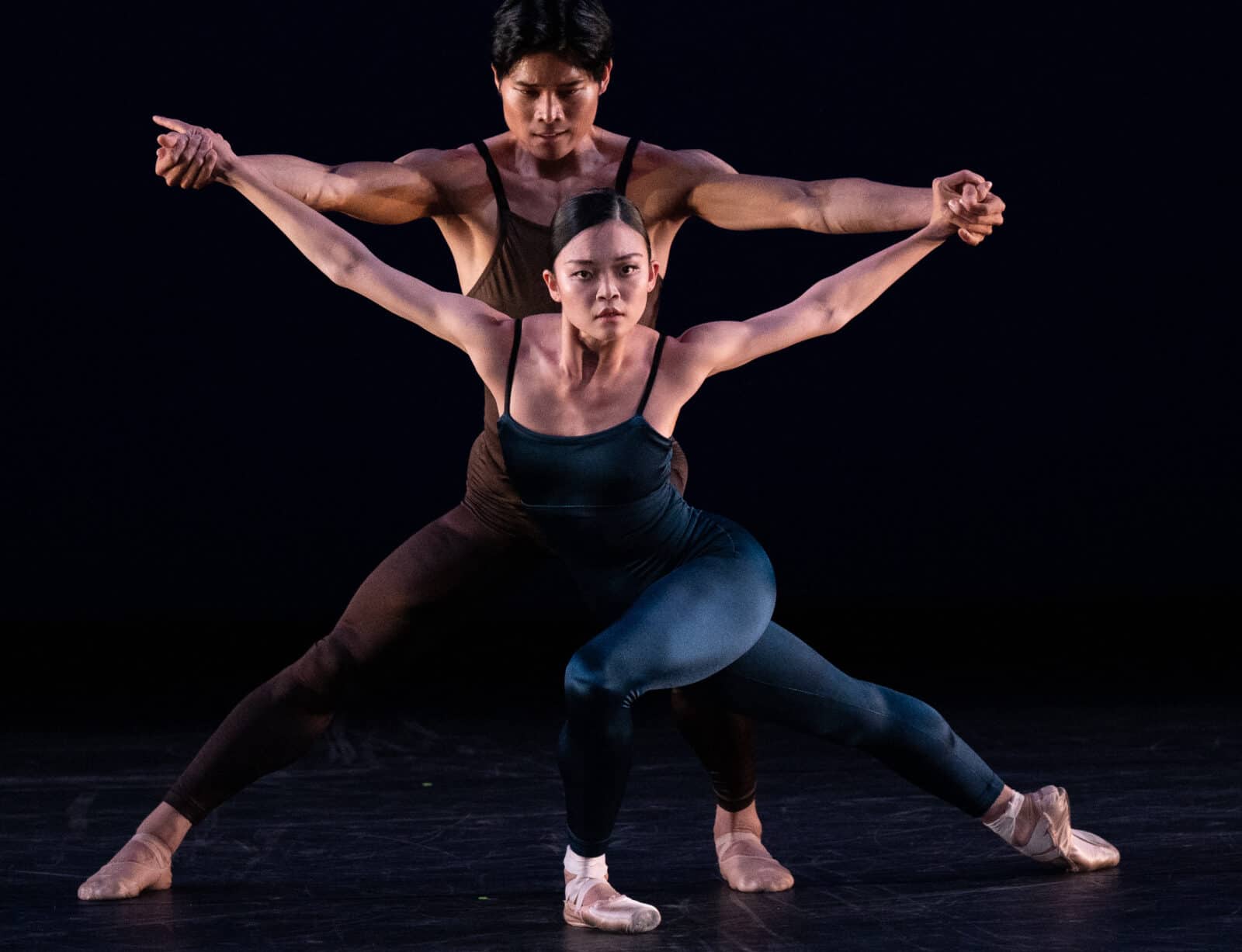
Young Gyu Choi and Riho Sakomoto perform in Hans van Manen's Variations for Two Couples with the Dutch National Ballet. Press photo courtesy of Jacob's Pillow Dance Festival
An awardwinning Young Creative Associate with the company since 2021, Kuindersma channels an immediacy that runs also through the program’s first performance, Hans van Manen’s Variations for Two Couples (2012). He has long been known for clear movement, and the dancers here are sharing energy and playing off each other.
Young Gyu Choi and Riho Sakomoto, Jingjing Mao and Jakob Feyferlik are holding tension, taking each other’s weight. One couple takes the stage and owns it, then the other, then both, onrushing, and the women are moving as expansively as the men — turning freely, arcing, opening their shoulders, filling the space.
In sound and color too, van Manen’s work has a spare essential focus. In a form sometimes known for rococo levels of ornament, in movement and music and costume, he is illuminating human interaction.
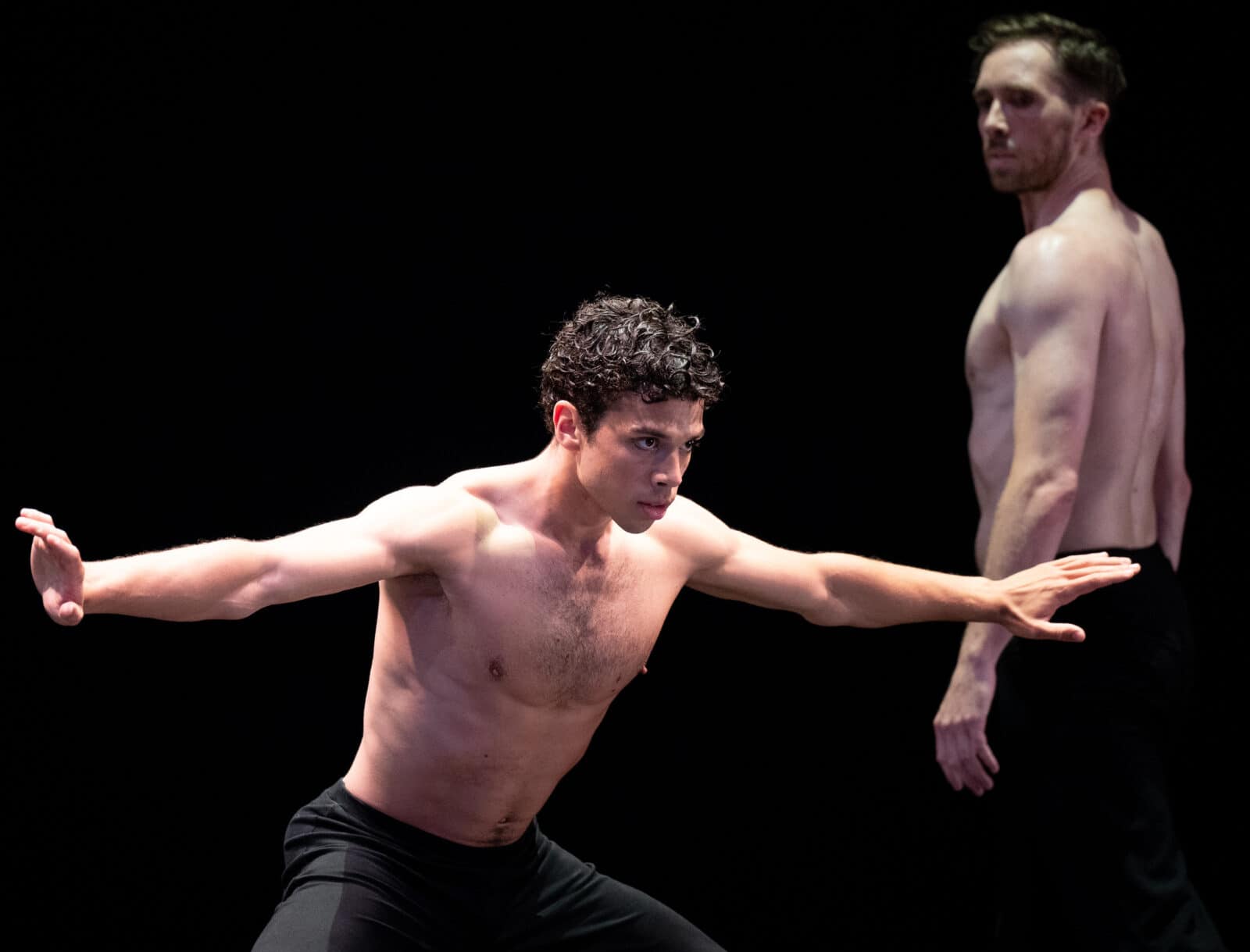
Timothy van Poucke spreads his arms wide and blocking as James Stout looks over his shoulder in Wubkje Kuindersma's Two and Only with the Dutch National Ballet. Press photo courtesy of Jacob's Pillow
At the opening in the second half, the company has added another of his works tonight, Solo, a highlight in an already bright evening. It’s actually a trio — three men perform individually for most of the work, one skimming offstage as another flicks on. And they’re aware of each other. Joseph Massarelli, Daniel Montero Real and Daniel Silva are locking eyes, trading energy.
They’re beckoning, challenging each other with a confidence that reminds me of rap battles and Che Malombo on this stage years ago — check this out. They’re claiming the stage, rapid and clear and percussive in the movements of their bodies, less in sound than in movement, quick flicking of muscle, calf to hip to shoulder to wrist. They’re laughing, flying on adrenaline, and they’re building momentum.
It’s a powerful contrast to what follows. In works choreographed in the early to mid-20th century, the dancers and the music both keep a rhythm of pauses, movement constantly stilled and sound falling silent. Each shift of a hand, a foot, is precise, beautiful, calibrated and controlled.
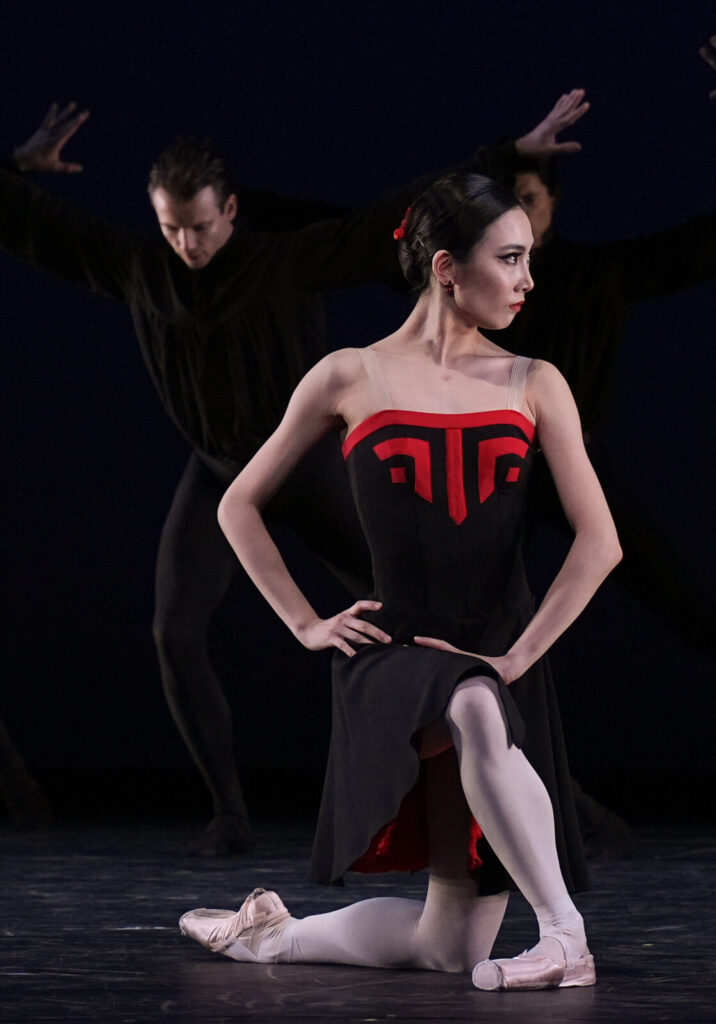
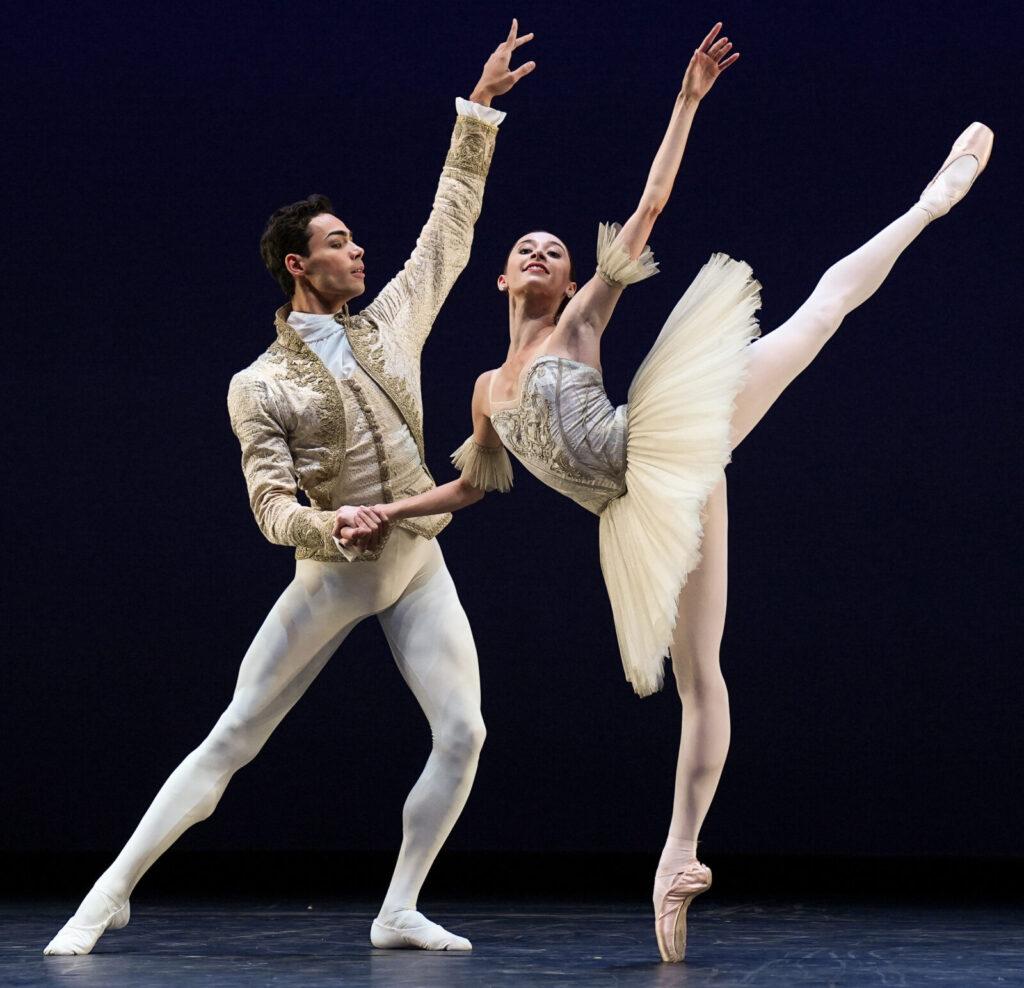
Qian Liu performs in Hans van Manen’s Five Tangos, and Victor Caixeta and Elisabeth Tonev perform in Grand Pas Classique. Photos by Becca Oviatt
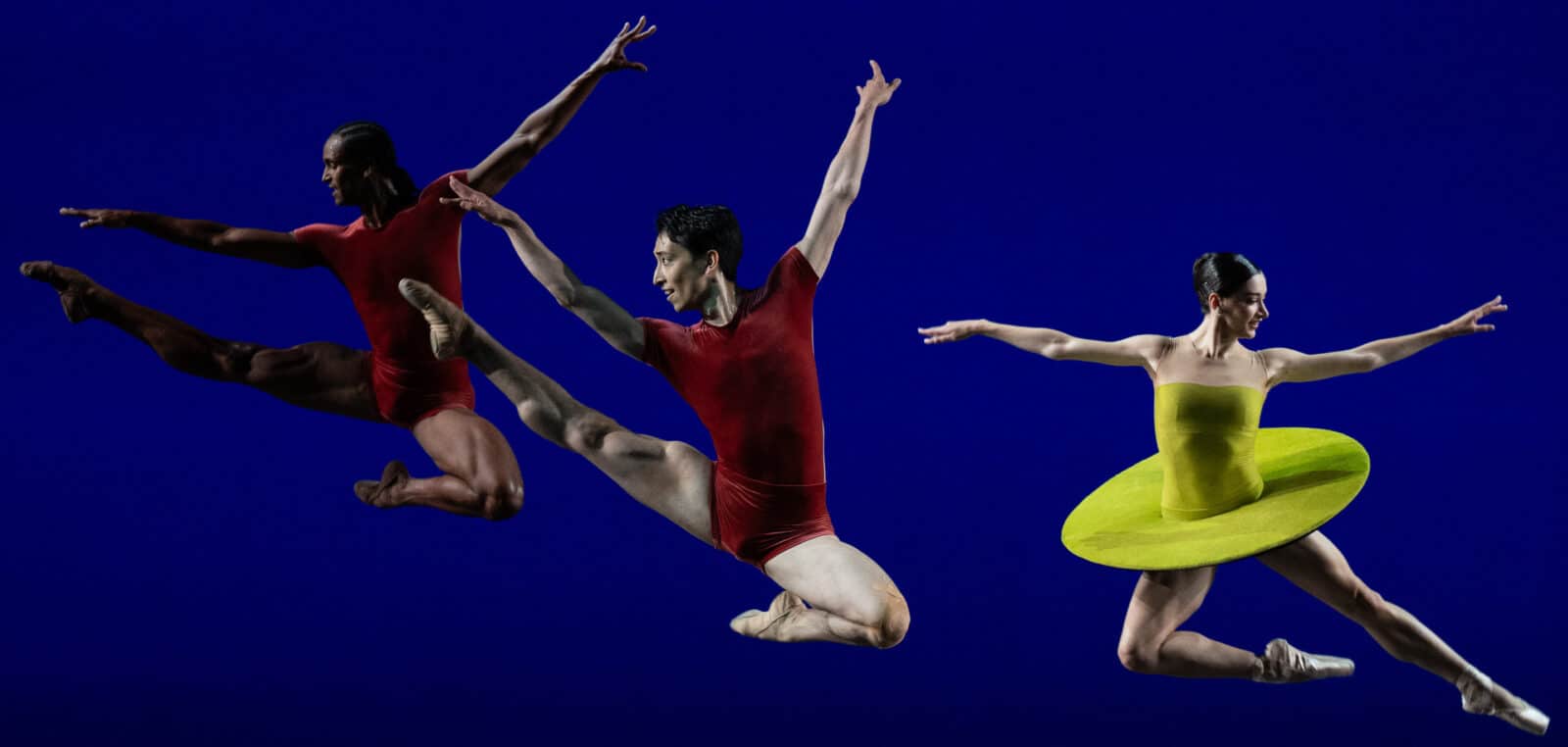
Davi Ramos, Sho Yamada, and Salome Leverashvli leap together in William Forsythe's The Vertiginous Thrill of Exactitude with the Dutch National Ballet. Press photo courtesy of Jacob's Pillow Dance Festival
And that contrast seems to invite questions. Tonight’s show gives a view across a hundred years — the works move in time, Pillow scholar Maura Keefe suggested in her talk before the show, and they mark a progression. They open a conversation naturally about ballet in the 21st century: where the form has come from, where they are today and where they are going.
Ballet has grown in the Netherlands from a unique perspective, she said. Ballet has come to them as a relatively new artform, emerging after World War II, and they can approach the form with liberal originality. In countries where the form can go back to the Italian Renaissance, she traces debates in Europe and America about what ballet is.
What ballet is here, tonight, feels honest and natural and equal. The Dutch National Ballet welcomes the world into their company, artistic director Pam Tatge says in opening, and the company’s associate director, Rachel Beaujean, agreed when she described the work to me in a story for the Eagle — the company has a deep value for diverse perspectives. Choreographers have the freedom to express their own changing lived experiences. They can keep and celebrate the beauty and strength of the form — and let it grow.
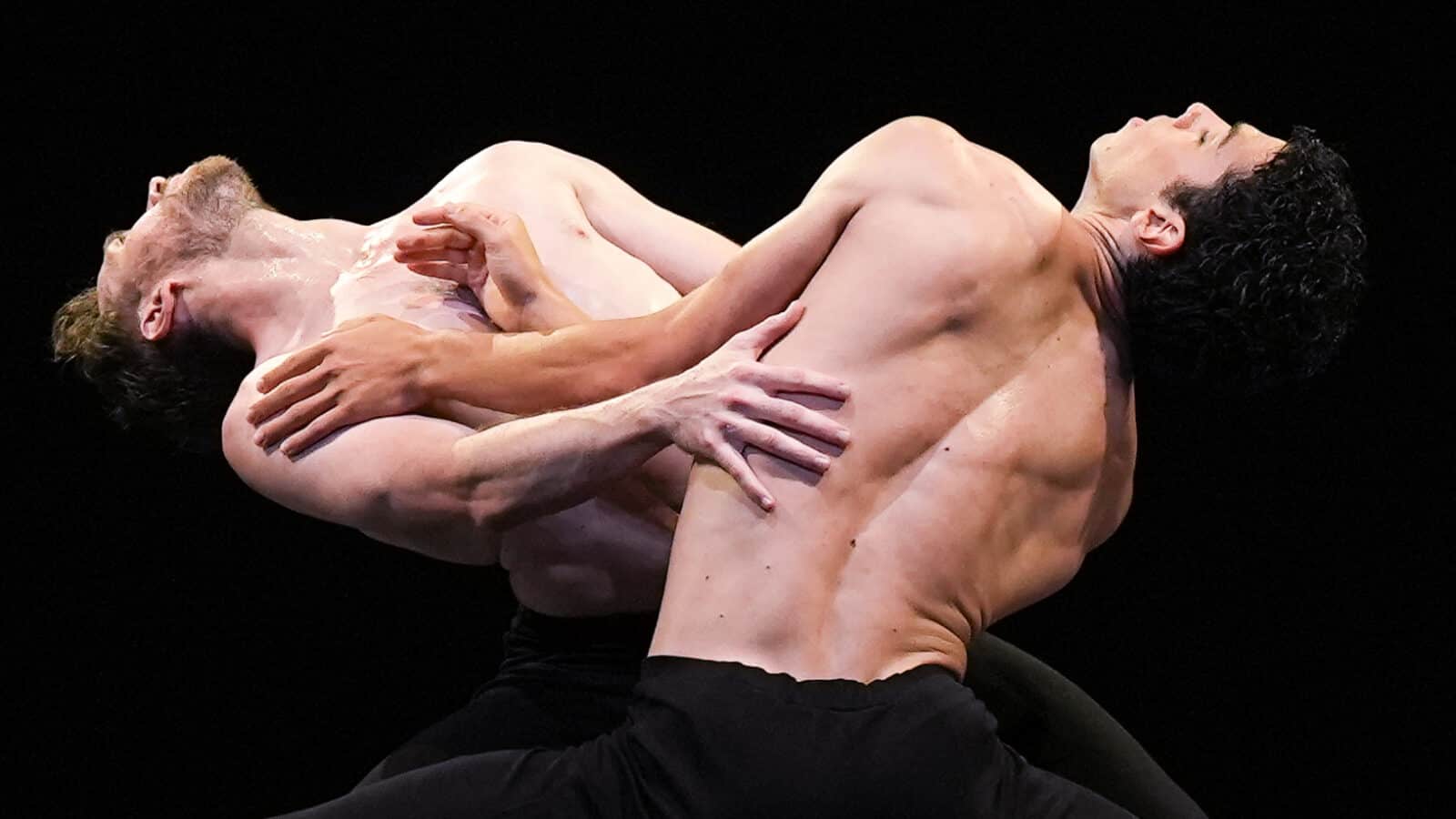
Timothy van Poucke and James Stout curve close together in Wubkje Kuindersma's Two and Only with the Dutch National Ballet. Press photo courtesy of Jacob's Pillow
As those ideas emerge in the arc of the program, they can give a new focus, as later work and earlier work move side by side. The earliest work in the program, Victor Gsovsky’s Grand Pas Classique, is a work from 1949 set by a choreographer active since 1925. The dancers are arresting in their steel-spring poise, precise and crystalline.
Keefe described the work as drawing on a conscious division in gender. The woman is delicate, she said, and decorates her own space within a limited frame, while the man leaps with bold virtuosic force. (Virtuosic — and virtue — both come from the Latin for valor, strength — and originally from vir, the Latin word meaning … man.)
Elisabeth Tonev holds herself with core strength and footwork extensively en pointe. And when she performs her solo, she keeps exactly in one place, while in his solo, Victor Caixeta launches himself across the stage. She often moves only when he touches her — she may move only when he moves her. She has her own fine control, to hold herself perfectly balanced and taut on one foot while he turns her. But the choreography does not often give her room to generate her own force and momentum.

Victor Caixeta performs in Grand Pas Classique with the Dutch National Ballet. Press photo courtesy of Jacob's Pillow
William Forsythe’s Vertiginous Thrill of Exactitude (1996) seems both to celebrate and to parody this kind of classical vocabulary — the men leaping, athletic in crimson, the women gliding wiht fast and challenging footwork with vibrant accuracy, in yellow-green costumes with a satirical abstract expressionist flair. (I remember the colorful two-dimensional shapes in David Smith’s sculpture at the Clark Art Institute 10 years ago.)
Forsythe seems to play on classical and innovative elements, a contrast echoed in the last performance of the evening, Hans van Manen’s Five Tangos (1977). When he premiered the work, van Manen introduced the Netherlands to the internationally acclaimed Argentine composer Astor Piazzola, a globally known performer on the bandoneon, a button accordion.
The music has Argentine roots but seems half deconstructed here into a classical minimalism. The dancers form fluid couples as the music turns, dissonance resolving into patterns. And Young Gyu Choi performs a vivid solo, arms open, spinning, unstoppable as a storm.
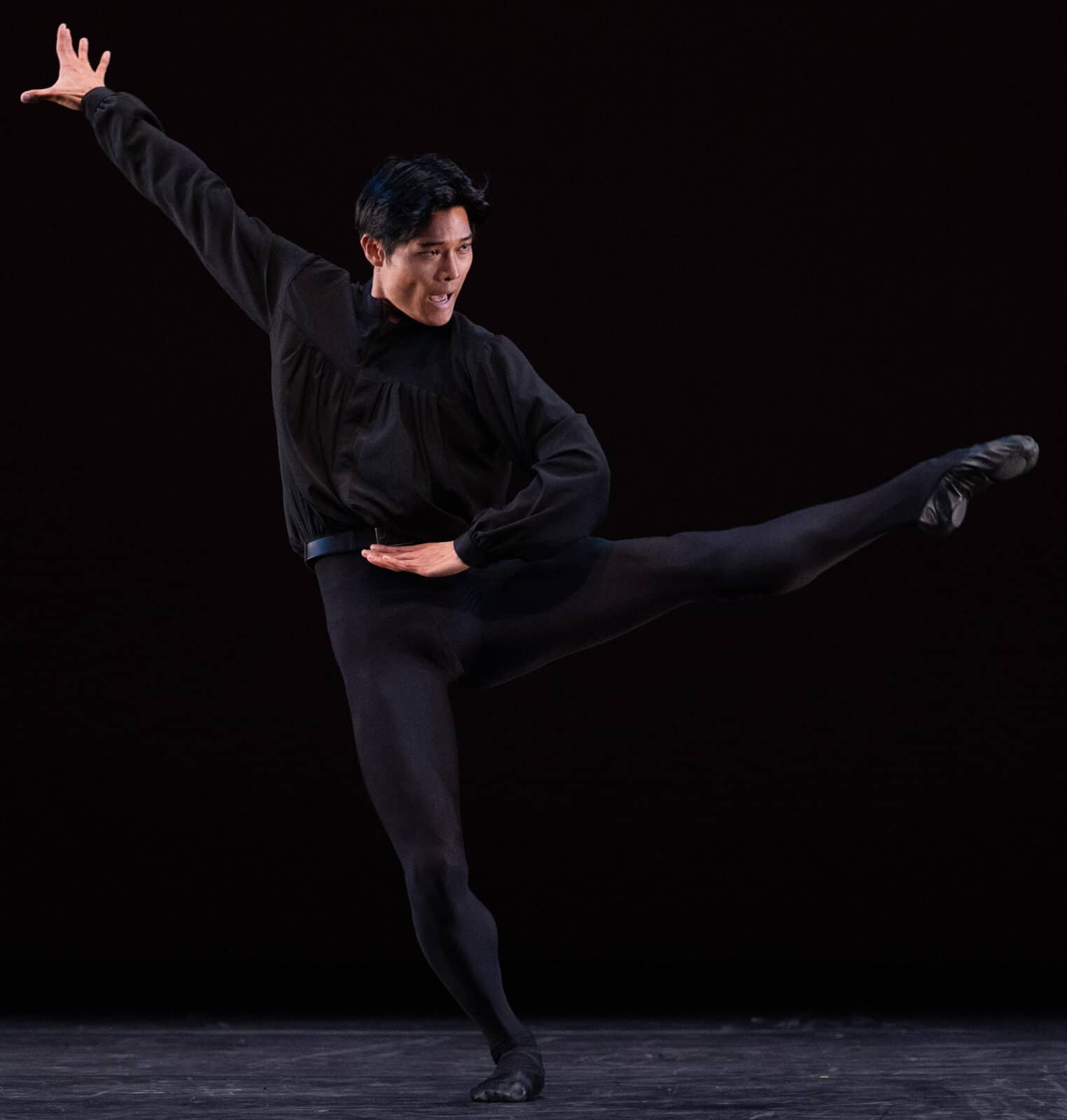
Young Gyu Choi performs in Hans van Manen's Five Tangos with the Dutch National Ballet. Press photo courtesy of Jacob's Pillow Dance Festival

